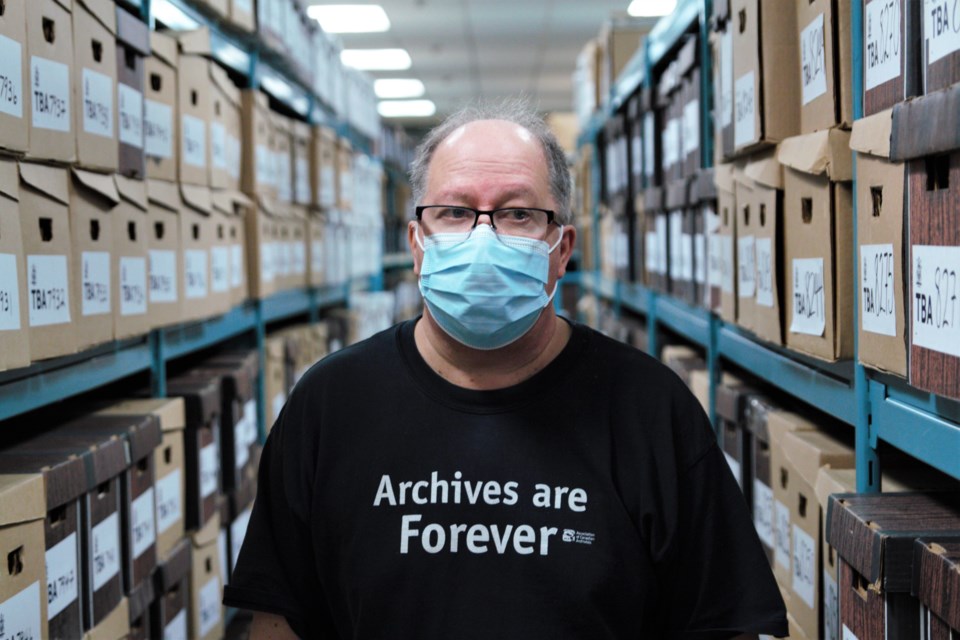THUNDER BAY – It may be an increasingly digital world, but the City of Thunder Bay’s archives manager Matt Szybalski says there’s still a need for paper – and a lot of it.
With an average of 400 boxes of paper records deposited in the city’s archives each year, the Harry Kirk Archives and Records Centre, on Vickers Street, is expected to run out of room by the end of 2023.
At a city council meeting on Monday, administration will outline a plan for a $3.5 million addition that’s projected to offer another 40 years’ worth of archival space.
The project has been identified by administration as one of the top 25 infrastructure priorities for the city.
The archives currently holds over 17 million pages of historical documents, some dating back to the 19th century, from property records and tax rolls to records of city decision-making and agreements.
The addition would add 4,200 square feet of space, extending the building into a parking lot to the north.
It would feature HVAC systems designed to maintain constant temperatures of 18 to 20 C and relative humidity of 45 per cent to preserve the documents, along with Novec gas fire suppression to avoid water damage.
It would also use mobile shelving that compact to hold more records.
Administration will recommend including $500,000 in the 2023 city budget for planning and design work, and the remaining $3 million for construction in 2024.
Councillors will hear details of the proposal Monday and have a chance to ask questions, but a decision on whether to move forward isn’t expected until deliberations over the 2023 budget, after a new council is elected in October.
Alternatives to the addition including digitization and paying to store records elsewhere were evaluated but found to be more expensive, city staff said in a report.
Administration estimates it would cost a whopping $38.5 million over five years to digitize existing records, and an additional $1.4 million each year to digitize new additions, using modelling developed by the Association of Records Managers of America (ARMA).
Those expenses are largely related to the amount of staff time it would take to handle and scan the documents, as well as the purchase of some advanced scanning equipment.
“Digitization is an extremely time-consuming process, especially when you’re dealing with archival records, and so that’s where the expenses come,” said Szybalski.
The city has begun digitizing some records to make them more easily accessible, but it’s not a space-saving measure.
“We don’t throw out the originals after we digitize,” said Szybalski. “They have a context that ties them back to their creation and adds to their legal and evidential value.”
Outsourcing the storage of the records, meanwhile, was estimated to cost $5.9 million over 40 years, higher than the roughly $4.3 million price tag for the new building, including annual operating costs.
Szybalski also raised the possibility the building could generate additional revenue by renting unused space to other local organizations like the university and public library. The Thunder Bay Museum has expressed interest, he said.
The city’s approach is in line with that taken by the province and other governmental archives, the report concluded.
While continuing to store the documents comes at a cost, it also delivers major benefits, said Szybalski.
The archives provided key evidence in the city’s legal victory in the James Street Bridge case against CN, he noted, saying it’s one example of how the investment in maintaining the documents pays off financially.
The archives are accessed about 150 times a year for public research visits, and about 500 times a year by city staff.
The documents are used by scholars, amateur historians, and by homeowners and engineering firms who want to learn more about a property’s history, he said.
They’ve also supported initiatives like a project examining the local experience during World War I.
“You can’t go to where you’re going to unless you know where you’ve come, and this tells you where we’ve come from,” Szybalski said.
